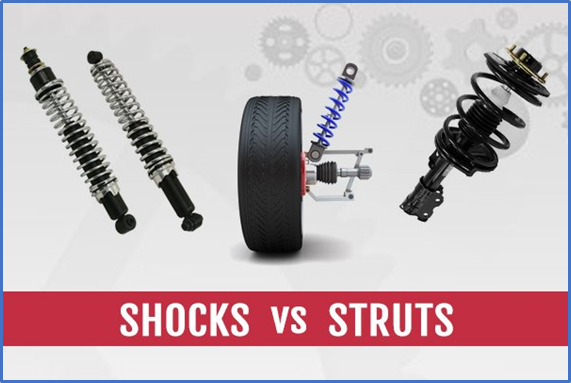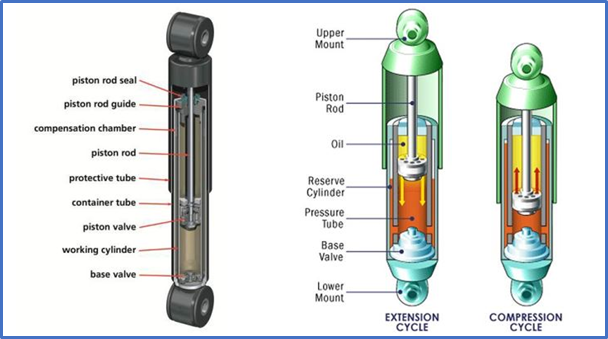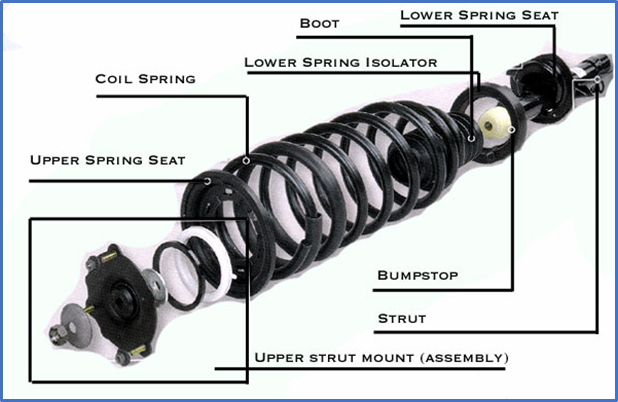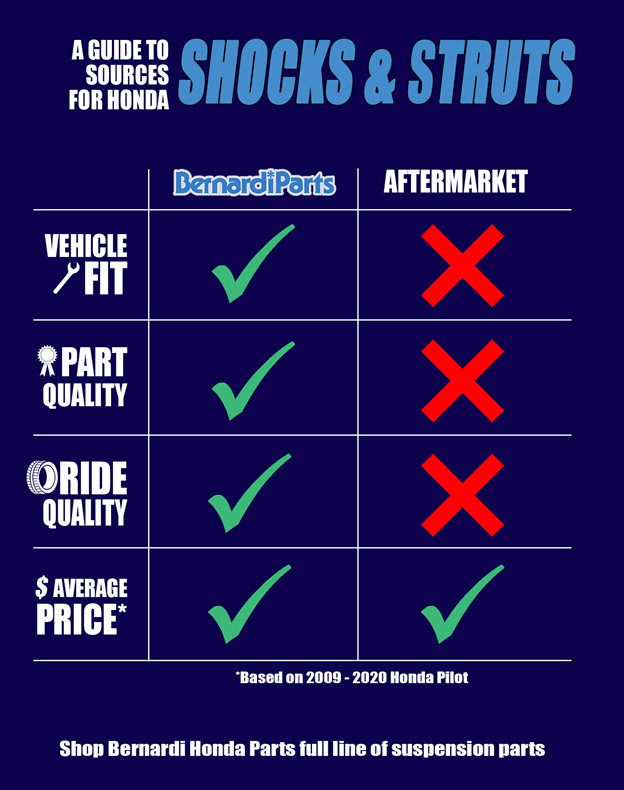
The Bernardi Parts warehouse is located in Natick, MA. That means we are no strangers to the joys of pothole season and the bumpy roads some New Englanders think of as quaint.
We also know that shocks and struts are the difference between feeling every single bump and a smooth ride. Just like your brakes and tires, shocks and struts will wear down over time. That means they are a maintenance item that you should expect to replace in order to keep your vehicle operating safely.
The Differences Between Shocks and Struts
While some may interchangeably use the words “shocks” and “struts”, they are in fact separate and different parts. They do serve similar purposes, however; they just accomplish them in different ways.
Essentially, both shocks and struts keep the car from bouncing up and down as your vehicle travels down a bumpy road.
Shock Absorbers
Shock absorbers are self-contained units that do nothing for your car’s suspension. Shocks use hydraulics to control the bounciness of your car’s springs.

Struts
Struts are a structural part of your car’s suspension system. They are much larger than shocks, and include a large spring that holds the car up.
Struts are attached to the body of the vehicle using a movable upper strut mount, located above the spring. The coil spring supports the weight of the vehicle, while the strut prevents up and down movement. The lower spring seat is then attached to your car’s suspension.

How to Test the Health of Your Shocks and Struts
Are you not sure if it is time to replace your vehicle’s shocks and struts? There are a few items you can check to determine if either or both your shocks and struts need to be repaired or replaced.
The first thing to check is, to use a technical term, your car’s “bounciness”. If you feel every single bump you drive over, and wince at the site of the rumble strips as you approach a toll plaza, that should be all the motivation you need to test your shocks and struts.
A great way to test this is to physically bounce one side of your vehicle’s bumper up and down. Use your knee to push down on the bumper and compress your car’s springs, and then let them rise up. Do this a couple of times to get your car rocking and then let go after one last downward push. If your car continues to visibly bounce up and down after you stop pushing, it might be time to replace your shocks and struts. Healthy shocks and struts, on the other hand, will almost instantly stabilize your car.
Another giveaway that it is time to replace your shocks and struts is if you see any fluid leaking from them. This is a clear sign that it is time for you or a Honda-certified mechanic to look at your shocks and struts. (And really, any time fluid is leaking, you should probably get that looked at).
How to Replace Your Shocks and Struts
Once you identify that your Acura’s shocks and struts need to be replaced, you should act quickly. Driving on worn shocks or struts can be very dangerous as it affects your vehicle’s braking, handling, and cornering abilities. It can also cause your tires to wear unevenly, which can increase your chances of hydroplaning in bad weather.
To make sure you don’t increase your chances of being involved in an accident, it’s best to replace your shocks and struts as soon as they show signs of wear and decreased performance.

Shopping for OEM shocks and struts with Bernardi Parts is easy, and we offer free shipping on qualifying orders. Acting quickly can help make sure the regular wear and tear on your shocks and struts don’t lead to more a serious problem.
To find the right parts for your Honda, click this link to open our homepage in a new browser window and then follow along with this video to select your model, year, and trim package.

For more information on this or for help finding the right OEM Honda parts, feel free to send us a message or give us a call, at 800-924-1884.
Acting quickly can help make sure the regular wear and tear on your shocks and struts don’t lead to a more serious problem.
Interested in learning more about maintaining your Honda's safety and performance? Check out our comprehensive articles collection for more useful tips and information.